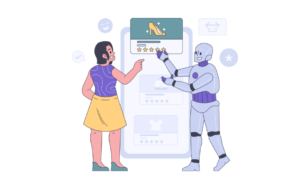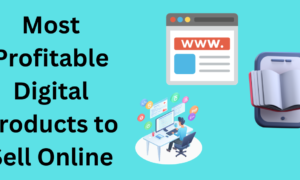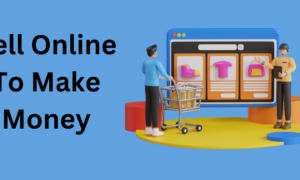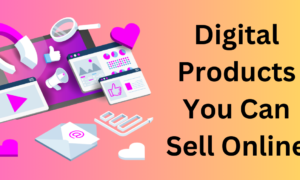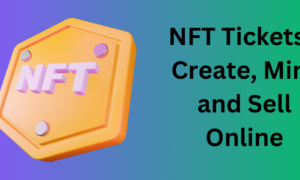Understanding buyer persona is crucial for success in the bustling online business world. But how can you effectively tap into their needs and preferences? Enter buyer personas – a vital tool for any online entrepreneur. Buyer personas are detailed, semi-fictional representations of your ideal customers, created based on market research and accurate data from your existing clientele.
They help you tailor your marketing strategies and business operations to meet better the specific needs and desires of different customer segments. Creating and utilizing buyer personas can enhance your marketing campaigns, improve customer relationships, and maximize your business appeal and sales. This approach will help you connect more effectively with your audience, fostering loyalty and driving growth in a competitive online marketplace.
Table of Contents
What is a Buyer Persona?
A buyer persona is a semi-fictional representation of your ideal customer, crafted from market research and accurate data about your existing customers. These personas provide a comprehensive profile with detailed information on customer demographics, behaviors, motivations, and goals. Think of it like creating a character for a story; your buyer persona embodies the narrative of your customer’s journey, needs, and preferences.
By understanding these personas, businesses can better tailor their marketing strategies and products to meet their target audience’s needs and desires. This approach helps create more personalized and effective marketing campaigns, fostering deeper customer engagement and driving better business outcomes.
Examples of Buyer Personas
Consider two buyer personas for an online clothing store:
- “Fashion-Forward Fiona”: A 25-year-old professional who loves staying ahead of trends and values high-quality, sustainable fashion.
- “Bargain Hunter Bob”: A 40-year-old father of two who seeks affordable yet stylish clothing options for his family.
Why Are Buyer Personas Important?
Enhancing Marketing Strategies
Buyer personas are essential for tailoring your marketing efforts effectively. By developing a deep understanding of your audience’s needs and preferences through these detailed profiles, you can create targeted campaigns that resonate more deeply with them. This approach ensures that your marketing messages are relevant and compelling, addressing different customer segments’ specific pain points and desires.
As a result, your campaigns will engage your audience more effectively, leading to higher levels of interaction and interest. This personalized strategy boosts engagement and increases conversion rates, as potential customers feel understood and valued. Buyer personas enable you to connect with your audience on a more personal level, driving better business outcomes.
Improving Customer Relationships
Addressing your customers’ specific problems and desires builds more robust and meaningful relationships. Personalized interactions show that you understand and care about their unique needs, fostering a sense of trust and loyalty. This personal touch makes customers feel valued, encouraging them to return for future purchases. Moreover, satisfied customers are more likely to share their positive experiences with others, generating valuable word-of-mouth referrals.
This organic promotion can significantly enhance your reputation and attract new customers. In essence, by tailoring your approach to meet individual customer needs, you improve customer satisfaction and create a loyal customer base that supports long-term business success.
Steps to Create Effective Buyer Personas
Step 1: Conduct Market Research
Start by researching your market to understand trends, competitors, and potential customer segments comprehensively. Tools like Google Analytics can analyze website traffic and user behavior. Industry reports provide valuable data on market trends and benchmarks. Conduct market surveys to gather direct feedback from your target audience. This combination of tools and methods will help you identify key patterns and insights, enabling you to make informed decisions and tailor your business strategies effectively.
Step 2: Gather Data from Existing Customers
Leverage data from your current customers by conducting surveys and interviews and analyzing social media insights. Surveys and interviews provide direct feedback on customer experiences and preferences. Social media insights reveal patterns in behavior and engagement. By examining this data, you can identify trends and commonalities in what your customers like, dislike, and expect. This information is crucial for tailoring your products, services, and marketing strategies to meet their needs better, ultimately enhancing customer satisfaction and loyalty.
Step 3: Identify Customer Pain Points and Needs
Understanding your customers’ challenges and desired solutions is crucial for effectively aligning your product or service offerings with their needs. By identifying their pain points and goals, you can develop solutions that address these issues and provide meaningful value. This customer-centric approach enhances the relevance and appeal of your offerings and strengthens customer satisfaction and loyalty. Additionally, it positions your business as a trusted partner that genuinely cares about solving your customers’ problems, fostering long-term relationships and sustainable growth.
Step 4: Create Persona Profiles
Combine the gathered information to create detailed persona profiles. Include:
- Demographic Information: Age, gender, income, education, etc.
- Psychographic Information: Interests, values, lifestyle, etc.
- Behavioral Information: Buying habits, brand loyalty, preferred communication channels, etc.
Step 5: Test and Refine Your Personas
As you gather more data, personas should evolve to reflect the changing dynamics of your audience. Utilize A/B testing to experiment with different strategies and determine which resonates best with your target demographic. Additionally, actively seek customer feedback to refine and enhance your personas. This iterative process ensures that your personas remain accurate and relevant, enabling you to effectively tailor your marketing efforts and product offerings. By staying responsive to evolving customer preferences and behaviors, you can maintain a competitive edge and drive sustained success in your business endeavors.
Conducting Market Research
Tools and Techniques
Utilize tools such as Google Trends, SEMrush, and social media analytics to gain insights into market dynamics. These tools provide valuable data on trends, keywords, and audience behavior, helping you understand the competitive landscape and identify opportunities. Additionally, focus groups and competitive analysis should be conducted to gain a broader perspective.
Engaging with your target audience directly and studying competitors’ strategies can offer deeper insights into consumer preferences and industry trends. By combining quantitative and qualitative methods, you can make informed decisions and tailor your business strategies to effectively meet market demands and stay ahead of the competition.
Analyzing Market Trends
Staying updated with industry trends is essential for anticipating shifts in customer behavior. By proactively monitoring changes and developments in the market, you can adjust your buyer personas accordingly. This proactive approach ensures that your personas remain aligned with your target audience’s evolving needs and preferences.
By staying ahead of trends, you can anticipate customer expectations and tailor your products, services, and marketing strategies to meet them effectively. Ultimately, this proactive stance allows you to maintain relevance, engage customers more meaningfully, and sustain success in a dynamic and competitive marketplace.
Gathering Data from Existing Customers
Surveys and Interviews
Directly engage with your customers by asking about their preferences and experiences through surveys and interviews. These methods provide invaluable insights that help create accurate buyer personas. Surveys allow for quantitative data collection, while interviews offer qualitative depth, revealing motivations and pain points.
By gathering firsthand feedback, you gain a deeper understanding of your audience’s needs and behaviors, enabling you to refine your personas accordingly. This direct approach ensures that your personas accurately reflect your customer base’s diverse perspectives and nuances, leading to more effective marketing strategies and improved customer satisfaction.
Social Media Insights
Analyze your social media interactions to better understand your audience’s preferences and behaviors. You gain valuable insights into their interests and preferences by examining which content garners the most engagement, such as likes, comments, and shares.
This data provides clues about what resonates with your audience, helping you tailor your content strategy to meet their needs better. By leveraging these insights, you can create more relevant and compelling content that drives deeper engagement and strengthens your connection with your audience, increasing brand loyalty and satisfaction.
Identifying Customer Pain Points and Needs
Understanding Customer Challenges
To effectively serve your customers, it’s essential to dive deep into the specific problems they’re aiming to solve. Are they seeking convenience, cost-saving solutions, or a unique and personalized experience? Understanding their underlying motivations and pain points is crucial for tailoring your offerings to meet their needs effectively. Thorough research and analysis can help you gain insights into the factors driving their purchasing decisions and preferences.
Whether streamlining processes for convenience, offering competitive pricing to save costs, or delivering innovative solutions for a unique experience, aligning your offerings with their goals enhances the value proposition and strengthens customer satisfaction. This customer-centric approach fosters loyalty and sets you apart from competitors by demonstrating a deep understanding of and commitment to addressing your customers’ specific needs and desires.
Aligning Solutions with Needs
Aligning your products or services with your customers’ identified needs and pain points is paramount to delivering real value. By understanding your customers’ challenges and the solutions they seek, you can tailor your offerings to address these issues directly. This alignment ensures that your business provides tangible benefits and solutions that resonate with your target audience.
Whether it’s offering time-saving solutions for busy professionals or cost-effective options for budget-conscious consumers, matching your products or services with their specific needs enhances the relevance and utility of your offerings. This strengthens customer satisfaction and loyalty and positions your business as a trusted partner that genuinely cares about solving their problems. Ultimately, this customer-centric approach fosters long-term relationships and drives sustained success in a competitive market.
Creating Persona Profiles
Demographic Information
Including basic details like age, gender, location, and occupation aids in effectively segmenting your audience. This data allows you to categorize customers into distinct groups based on demographic characteristics, enabling more targeted and personalized marketing strategies.
By understanding the specific demographics of your audience segments, you can tailor your messaging and offerings to meet their unique needs and preferences better. This segmentation approach enhances the relevance and effectiveness of your marketing efforts, leading to improved engagement and conversion rates.
Psychographic Information
Exploring your customers’ personalities, values, attitudes, and lifestyles offers a deeper insight into their motivations. You can create more targeted and resonant marketing strategies by understanding what drives their behaviors and choices beyond basic demographics.
This nuanced understanding allows you to tailor your messaging and offerings to align with their values and preferences, fostering stronger connections with your audience. Ultimately, by delving into the intricacies of your customers’ psychographic profiles, you can craft more compelling campaigns that resonate on a deeper level, driving higher engagement and loyalty.
Behavioral Information
Understanding how customers interact with your brand is essential for optimizing your sales funnel. By analyzing their purchasing habits and preferences, you can identify critical touchpoints and opportunities for engagement throughout their buyer journey. Knowing how they discover and access your products or services allows you to tailor your marketing efforts and streamline the sales process.
This behavior analysis provides valuable insights into the effectiveness of your marketing channels and the customer experience, enabling you to make informed decisions to enhance conversion rates and drive revenue growth. Optimizing your sales funnel based on customer behavior leads to more efficient and effective sales strategies.
Testing and Refining Your Personas
A/B Testing
Experimenting with various marketing strategies on your personas is crucial for optimizing your campaigns. Implement A/B testing to compare different approaches and determine which ones generate the most favorable outcomes. You can identify the most effective tactics for engaging your target audience and driving conversions by testing variables such as messaging, visuals, or call-to-action buttons.
This data-driven approach enables you to refine your marketing efforts continuously, ensuring that you allocate resources effectively and maximize the return on investment. Ultimately, leveraging A/B testing empowers you to make informed decisions and optimize your marketing strategies for enhanced performance and success.
Continuous Feedback Loop
Continuously refine your personas based on feedback and new data to ensure relevance. Customer needs evolve, necessitating adjustments to your personas to reflect changing preferences and behaviors. By staying responsive to feedback and incorporating fresh insights, you can maintain accuracy and effectiveness in your targeting efforts.
This iterative process allows you to adapt your strategies accordingly, ensuring that your marketing initiatives remain aligned with your audience’s evolving needs and expectations. Regularly updating your personas lets you stay ahead of the curve and deliver more impactful campaigns that resonate with your target market.
Using Buyer Personas to Tailor Your Sales Strategy
Personalizing Marketing Messages
Crafting messages tailored to each persona’s needs and preferences enhances the effectiveness of your marketing efforts. Personalized marketing resonates more deeply with your audience, demonstrating a genuine understanding of their unique challenges and desires. Addressing their pain points and offering relevant solutions creates a stronger connection with your customers, leading to higher engagement and conversion rates.
Personalized messaging also fosters a sense of value and relevance, increasing the likelihood of continued interaction and loyalty. By speaking directly to each persona, you can create more impactful campaigns that drive meaningful results for your business.
Segmenting Email Lists
Grouping your email subscribers based on their personas enables targeted email campaigns that resonate deeply with each segment. By categorizing subscribers according to their unique characteristics and preferences, you can tailor the content and messaging of your emails to address their specific needs and interests.
This personalized approach enhances relevance and engagement, increasing the likelihood of recipients opening, reading, and acting upon your emails. By delivering content that speaks directly to the concerns and desires of each persona, you foster stronger connections with your audience and drive higher conversion rates, ultimately maximizing the effectiveness of your email marketing efforts.
Customizing Product Offerings
Adapting your product range to cater to different personas’ specific needs fosters higher customer satisfaction and loyalty. By customizing your offerings to address each persona’s unique preferences and requirements, you demonstrate a commitment to meeting their individual needs. This tailored approach enhances the perceived value of your products, increasing customer satisfaction and loyalty.
When customers feel that your products are designed with their specific needs in mind, they are more likely to remain loyal to your brand and advocate for it within their social circles, ultimately driving long-term success and profitability.
Aligning Content Marketing with Buyer Personas
Content Creation
Developing content that speaks directly to the interests and concerns of your personas ensures its relevance and value. By tailoring your content to address each persona’s specific needs and preferences, you demonstrate an understanding of their challenges and aspirations.
This targeted approach increases engagement and resonates more deeply with your audience, driving higher levels of interaction and loyalty. When your content provides actionable insights or solutions that directly benefit your personas, they are more likely to view your brand as a trusted resource and remain engaged with your content over time, increasing brand awareness and credibility.
Content Distribution
Distributing your content on platforms where your personas are most active maximizes visibility and engagement. By strategically selecting channels frequented by your target audience, you increase the likelihood of reaching and resonating with them. This approach ensures that your content is seen by the right people at the right time, maximizing its impact and driving higher levels of engagement.
Whether it’s social media platforms, industry forums, or niche communities, meeting your personas where they already spend their time ensures that your content receives optimal exposure and fosters meaningful interactions with your audience, ultimately driving brand awareness and loyalty.
Optimizing Your Website for Different Buyer Personas
User Experience (UX) Design
Designing your website to accommodate the preferences of various personas enhances user engagement and satisfaction. By tailoring the user experience to align with each persona’s specific needs and preferences, you create a more intuitive and personalized browsing experience. This user-friendly approach encourages visitors to explore your site further and increases the likelihood of them finding relevant information or products.
Keeping visitors engaged for extended periods increases the chances of conversion and fosters positive perceptions of your brand. Ultimately, a website that caters to the diverse needs of different personas enhances overall user satisfaction and drives better business outcomes.
Personalization Techniques
Employ personalized recommendations and dynamic content to elevate user experience, rendering your website more appealing to diverse personas. By leveraging data insights to deliver tailored suggestions and content in real time, you cater to individual preferences and interests. This personalized approach captivates visitors and guides them toward relevant information or products, enhancing engagement and satisfaction.
By adapting to the unique needs of each persona, you foster a sense of relevance and value, encouraging prolonged interactions and increasing the likelihood of conversion. Such techniques ultimately enrich the overall user experience, fortifying customer loyalty and driving business growth.
Social Media Strategies for Different Buyer Personas
Platform Selection
Select social media platforms frequented by your personas and customize content and engagement strategies accordingly. By identifying the platforms where your target audience is most active, you maximize the reach and impact of your messages. Tailoring content to align with each platform’s unique features and audience preferences enhances relevance and resonance.
Engaging with your personas consistent with their preferred platform usage fosters meaningful interactions and strengthens brand-consumer relationships. By meeting your audience where they are and delivering content that speaks to their interests, you optimize social media effectiveness, driving higher engagement and, ultimately, achieving your marketing objectives more effectively.
Targeted Advertising
Leverage targeted ads to reach specific personas, ensuring efficient and effective allocation of your advertising budget. By tailoring your ad campaigns to resonate with each persona’s unique characteristics and preferences, you maximize relevance and engagement. Targeted ads allow you to focus on reaching those most likely interested in your products or services, increasing the likelihood of conversion.
This precision targeting minimizes wasted spending on irrelevant audiences, optimizing the return on investment. Ultimately, utilizing targeted ads enables you to allocate your advertising budget more efficiently, achieving better results and driving business growth.
Case Studies of Successful Buyer Persona Implementation
Company A: Increased Sales Through Persona-Driven Marketing
Company A’s strategic approach involved identifying key personas and customizing marketing efforts accordingly, yielding substantial sales and customer engagement improvements. By honing in on each persona’s specific needs and preferences, Company A delivered more targeted and relevant messages. This personalized approach resonated with their audience, driving increased interest and interaction.
As a result, Company A experienced notable growth in sales and deeper connections with its customer base. This success underscores the importance of understanding and catering to the diverse needs of different customer segments to achieve significant business outcomes.
Company B: Enhanced Customer Engagement with Targeted Content
Employing detailed personas, Company B crafted and disseminated content tailored to resonate with their audience, resulting in heightened engagement rates and enhanced brand loyalty. By meticulously understanding the needs and preferences of their various customer segments, Company B delivered content that addressed specific pain points and interests.
This personalized approach fostered deeper connections with their audience, driving increased interaction and loyalty towards the brand. Company B’s success underscores the significance of leveraging detailed personas to inform content creation and distribution strategies, ultimately fostering stronger relationships and driving business growth.
Conclusion
In the digital landscape, comprehending and leveraging buyer personas is fundamental for optimizing appeal and effectiveness. By delving into your target audience’s demographics, behaviors, motivations, and pain points, you gain invaluable insights to inform your marketing strategies. Tailoring your approach to resonate with each persona’s unique needs and preferences allows you to create more relevant and engaging content.
This personalized interaction fosters stronger connections with your audience, improving customer relationships and loyalty. Moreover, aligning your products or services with the identified needs of your personas enhances their perceived value, driving increased sales and revenue. Ultimately, buyer personas are a guiding compass for online businesses, facilitating a deeper understanding of their audience and enabling more impactful and targeted marketing efforts in a competitive digital landscape.
FAQs
What is a buyer persona, and why is it important?
A buyer persona is a detailed representation of your ideal customer. It helps you tailor your marketing strategies to better meet their needs.
How do I start creating buyer personas for my business?
Begin by conducting market research, gathering customer data, and identifying their pain points and needs. Use this information to create detailed persona profiles.
What common mistakes should I avoid when creating buyer personas?
Avoid making assumptions without data, creating too few personas, and not updating personas regularly based on new insights.
How often should I update my buyer personas?
Review and update your personas regularly, at least annually or whenever you notice significant changes in customer behavior or market trends.
Can small businesses benefit from using buyer personas?
Absolutely! Buyer personas help small businesses focus their marketing efforts and resources more efficiently, leading to better customer engagement and sales.




